The hype, and the reality, about the energy transition in 10 charts. Over the past few days, I’ve searched the NewsBank archive for uses of “energy transition.” One of the earliest uses of that now-ubiquitous phrase occurred in the Christian Science Monitor in 1981. In a dispatch from Nairobi, a reporter named Richard Critchfield explained that some “4,000 delegates from 154 countries” were gathering in the Kenyan capital for a two-week United Nations conference on new and renewable sources of energy. “The purpose of the conference,” Critchfield explained, was to “promote better understanding of the global energy transition from oil to such new sources as geothermal, solar, wind, ocean, and hydropower or energy from biomass, fuelwood, charcoal, peat, draught animals, oil shale, and tar sands.”
The article doesn’t mention climate change. Instead, it focuses on Kenya’s reliance on imported energy, the country’s geothermal potential, and the “classic third-world poverty trap of soaring oil costs and stagnant export earnings.”
Today, 43 years later, we are inundated with news reports about climate change and claims that we are in the midst of an energy transition that will eliminate our need for hydrocarbons. Myriad examples can prove that point, but consider the Earth Day press release from the White House. The April 22 release included the word “climate” 52 times and references the energy transition three times. For instance, it said President Joe Biden has launched a new “Clean Energy Supply Chain Collaborative to work with international partners to diversity supply chains that are critical to a clean and secure energy transition.” It continued, saying the president is “mobilizing other governments to follow the U.S. lead and commit to achieve net zero government emissions by 2040.”
Before going further, let me be clear about my politics. I’m not a Democrat. I’m not a Republican. I am Disgusted. I have no truck with either party. As a journalist focused on energy and power systems, my affiliation is with the math and the physics. My job is to spotlight the trends and the numbers and to separate the hype from the reality. Unfortunately, much of the media coverage about the energy transition is just that: hype. As I will show in these charts, the hype has soared during the Biden administration.
Last month, the EPA announced rules to “reduce pollution from fossil fuel-fired power plants.” In the agency’s April 25 press release announcing the new regulations, the word “transition” appears three times. The EPA said it was providing “regulatory certainty as the power sector makes long-term investments in the transition to a clean energy economy.” It also quotes the BlueGreen Alliance’s Jason Walsh as saying the EPA mandate provides a “toolbox of critical investments targeted to the workers and communities experiencing the economic impacts of energy transition.”
In these 10 charts, I abide by W. Edwards Deming’s commandment: “In God we trust, all others must bring data.” The numbers I’m presenting aren’t my numbers, they are the numbers. Here’s what the media won’t tell you about the energy transition.
I’ve said it before, but I’ll repeat it: the concept of the energy transition is essentially a Western conceit. The U.S. and Western European countries are spending hundreds of billions of dollars on programs like the Inflation Reduction Act and the Energiewende to fund buildouts of solar, wind, batteries, and tutti-fruity-colored hydrogen, but that doesn’t mean the rest of the world will do the same. There is no evidence that China and India are going through an energy transition. Instead, the numbers show those two countries are building staggering amounts of new coal-fired capacity. That capacity is far greater than the amount of nuclear capacity they are building. This chart, which I first published last December, uses updated figures from the International Energy Agency and Global Energy Monitor.
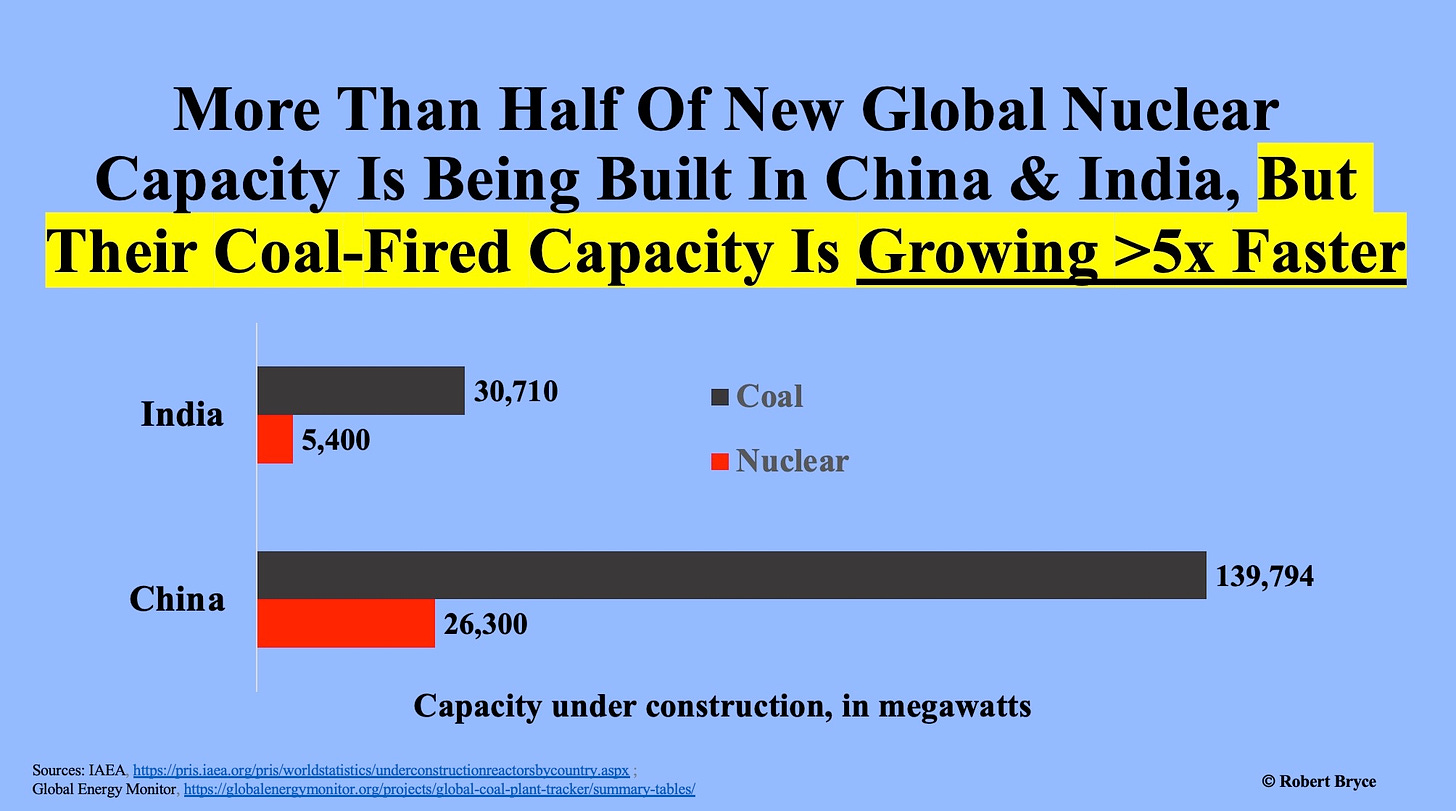
On April 30, Reuters reported, “India’s coal production and generation shattered records in March as miners and power producers made a Herculean effort to avoid a repetition of the fuel shortages and blackouts that hit the country two years ago. Domestic coal production soared to an unprecedented 117 million tonnes in March 2024, up from 108 million in March 2023 and 96 million in March 2022, according to data from the Ministry of Coal.”
The following two charts show that whatever emissions reductions are achieved in the U.S. and other big economies are being swamped by what’s happening in India and China.
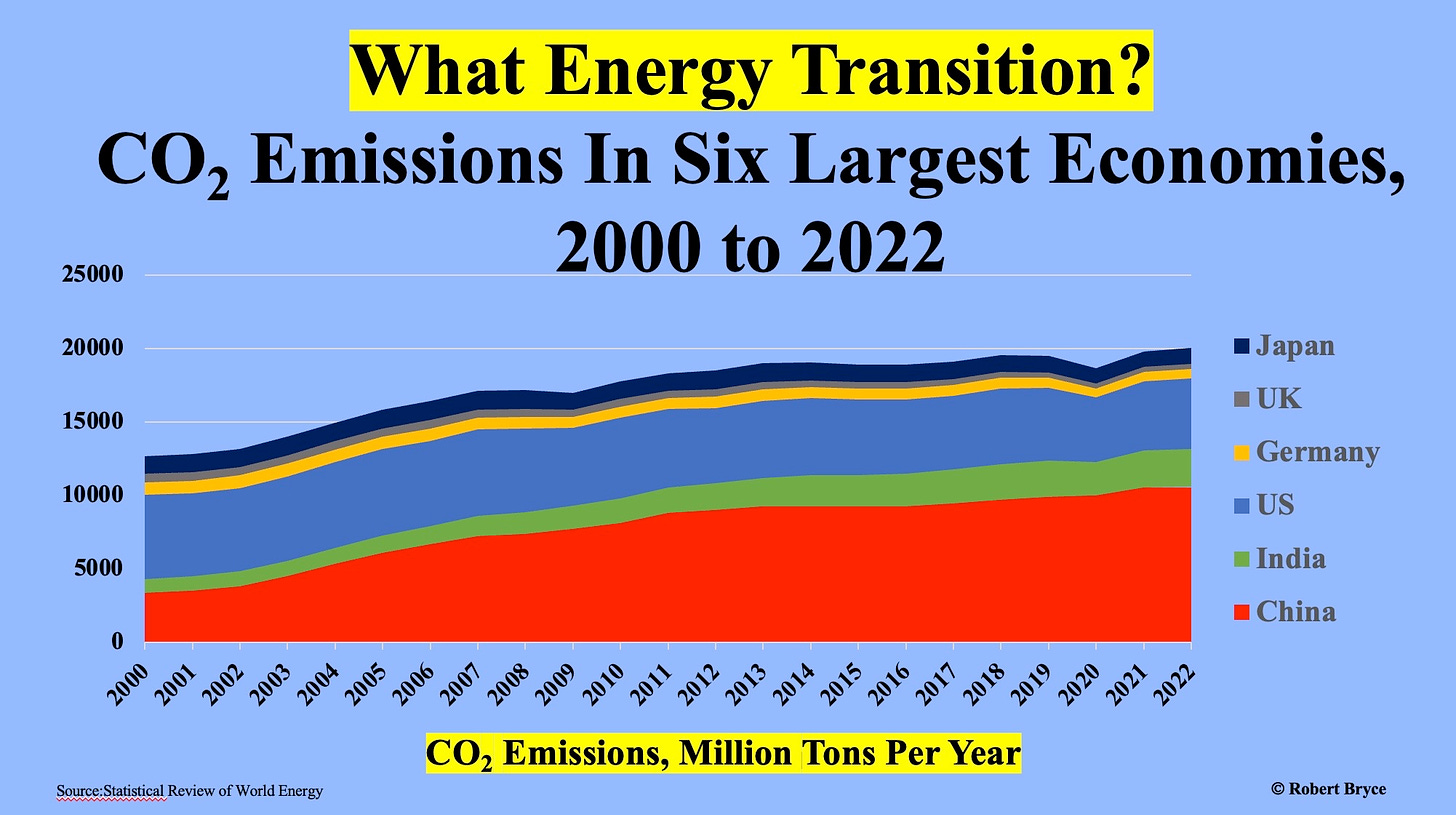
This chart uses the same numbers as those in the previous chart, but putting them in a horizontal format makes them easier to comprehend. It also underscores the challenge of decarbonizing the Indian and Chinese economies.
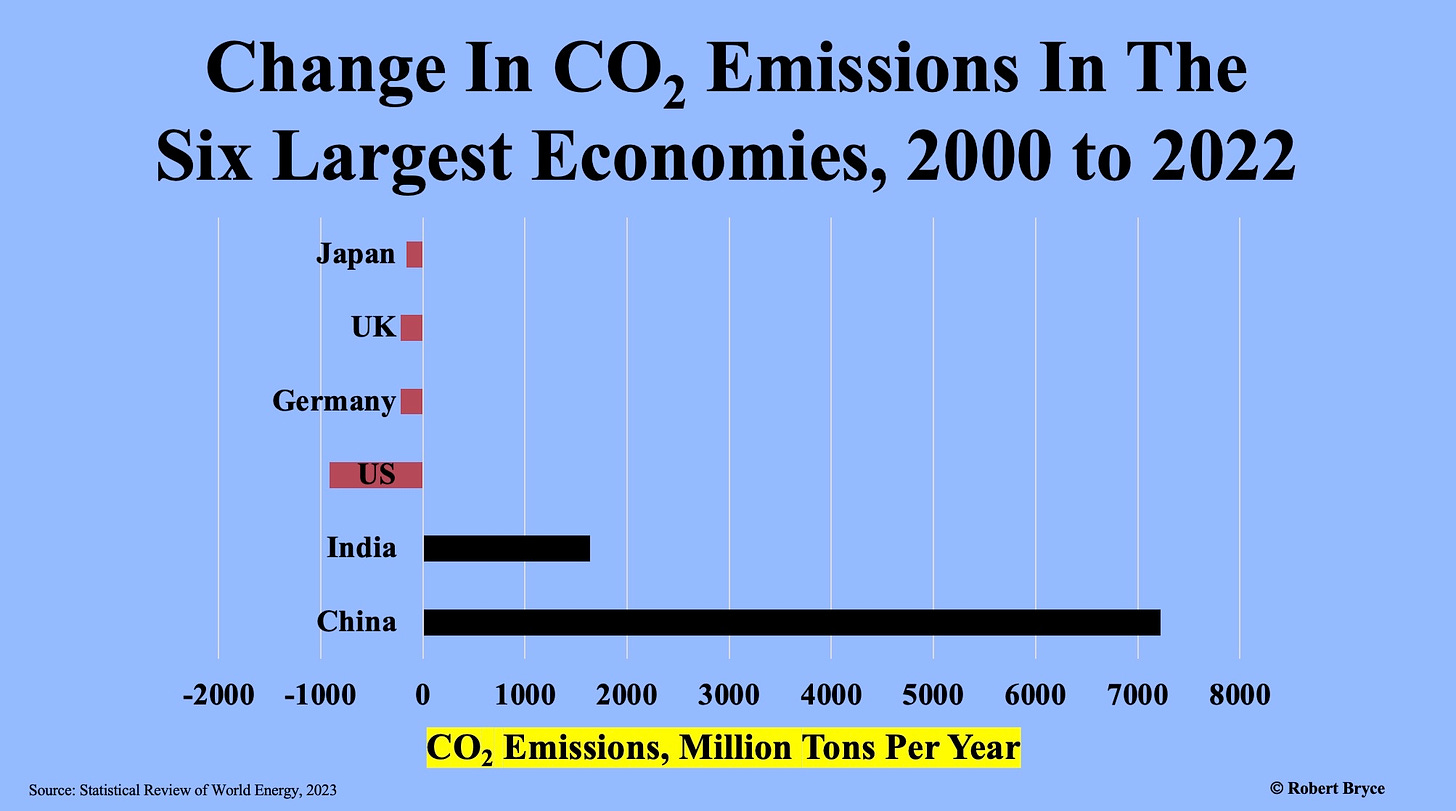
I have published this graphic before. But I am using it again here because it spotlights the staggering growth of hydrocarbons compared to the growth of the two politically favored sources of power generation, wind and solar.

As mentioned above, the EPA’s new mandates could force the closure of all the remaining coal-fired power plants in the U.S. by the mid-2030s. The mandate, which faces a years-long legal battle before it could become law, claims the U.S. must act on climate change. However, the mandate will not affect China and India, which generate eight times more electricity from coal than the U.S.
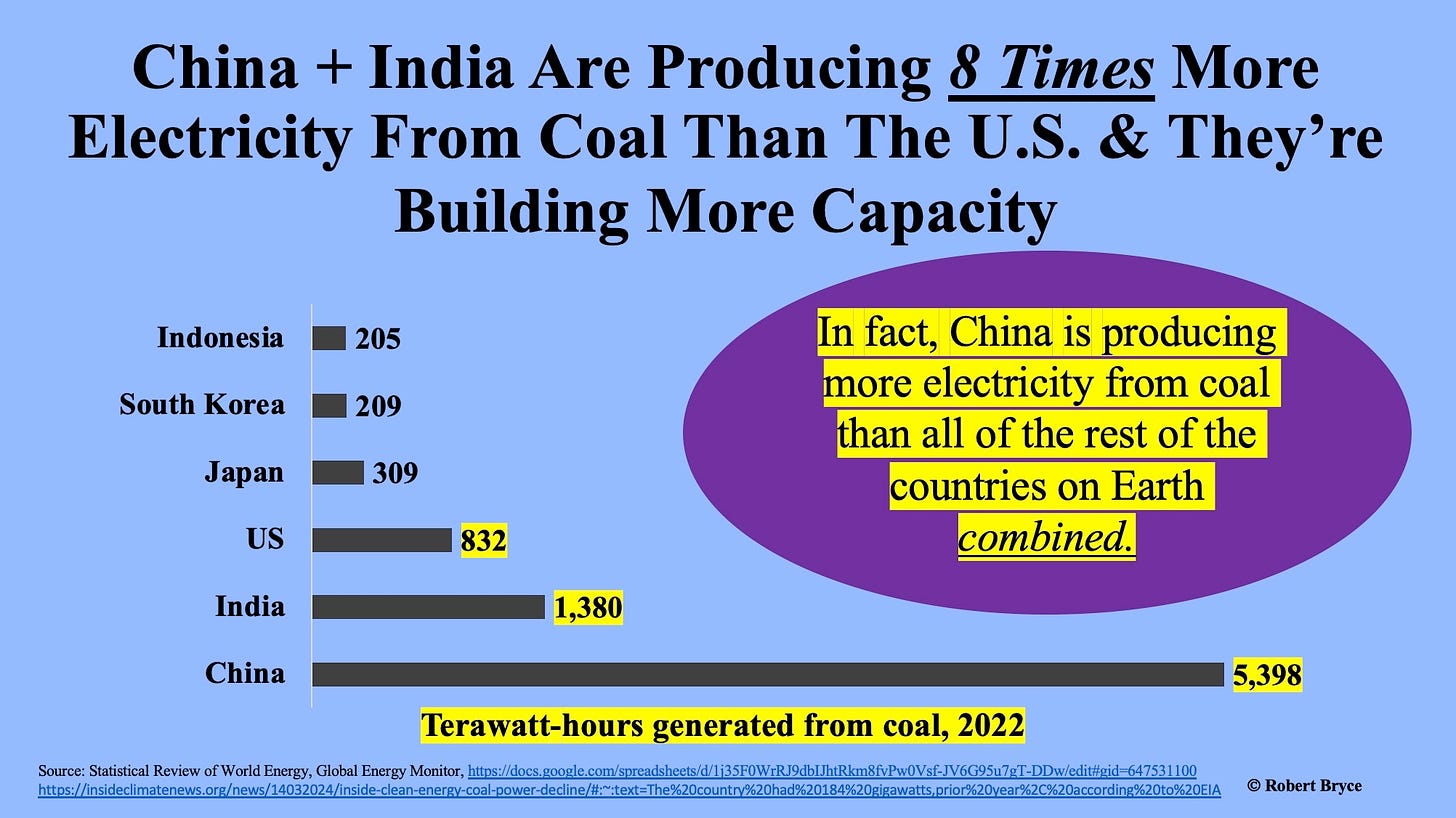
More coal-fired capacity is being built in developing countries. And those new plants will result in more emissions. On March 1, the International Energy Agency reported that energy-related CO2 emissions “grew by 1.1% in 2023, increasing 410 million tonnes to reach a new record high of 37.4 billion tonnes. This compares with an increase of 490 Mt in 2022 (1.3%). Emissions from coal accounted for more than 65% of the increase in 2023.”
That last line is critical. According to Global Energy Monitor, Bangladesh, China, Indonesia, India, and Vietnam are all building new coal plants. That new capacity, totaling nearly 188 gigawatts, is roughly equal to all existing U.S. coal-fired power plants (200 GW).
Furthermore, since 2019, according to Global Energy Monitor, China and India have added some 216 GW of coal capacity. One more number is relevant here: Those five countries have a combined population of 3.4 billion, or about 42% of all the people on the planet. Their electricity use is a fraction of the 12,000 kilowatt-hours per capita per year we use here in the U.S. For instance, in Bangladesh and Indonesia, electricity use is paltry: less than 500 and 1,200 kWh/capita/year, respectively.
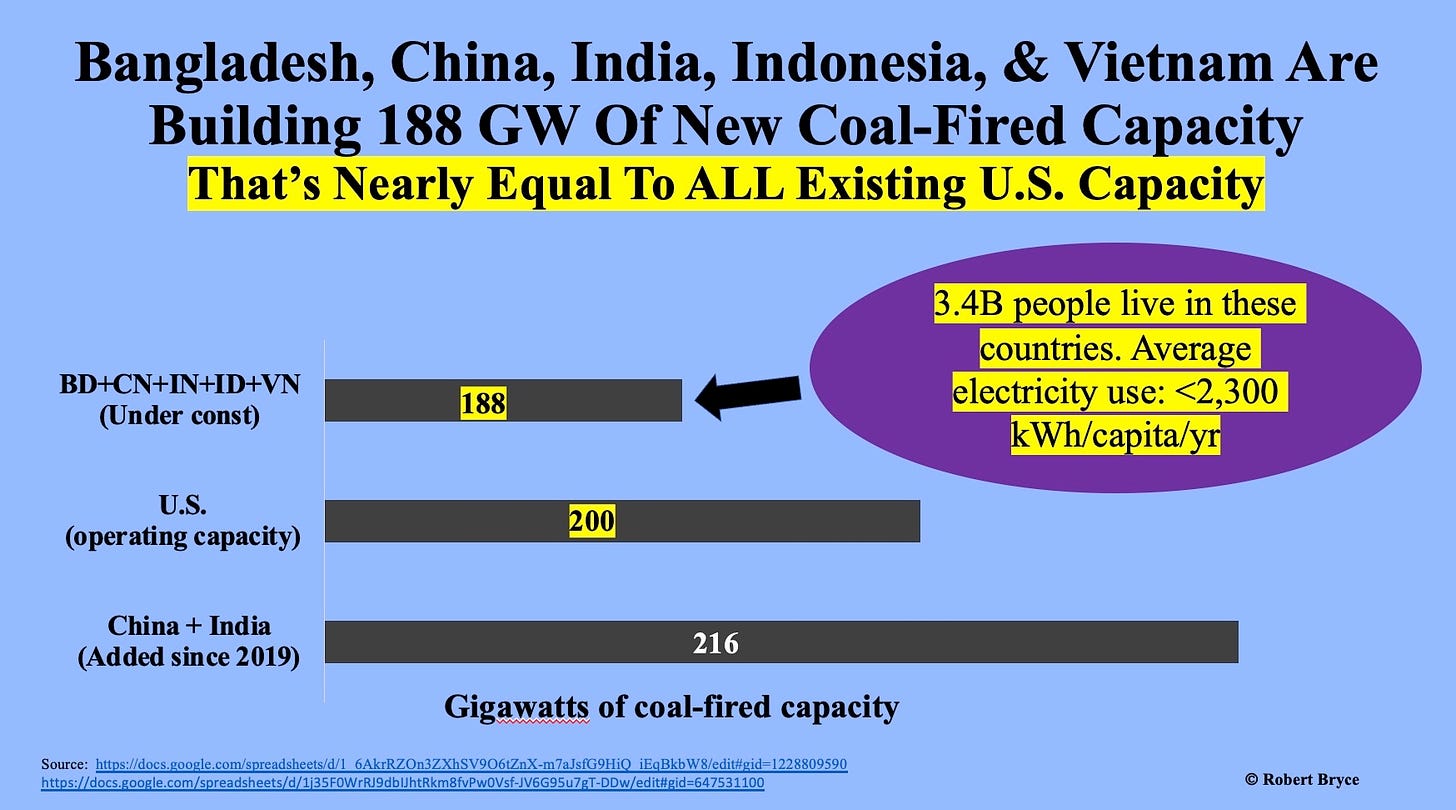
I published this chart last month in “Natty Nation.” I’m using it again here because it illustrates the point at hand. Yes, China, India, and other countries are burning more coal. The U.S. is reducing its use of coal. And yet, despite massive federal subsidies and numerous mandates at the local and state levels, wind and solar energy aren’t keeping pace with the growth in natural gas.
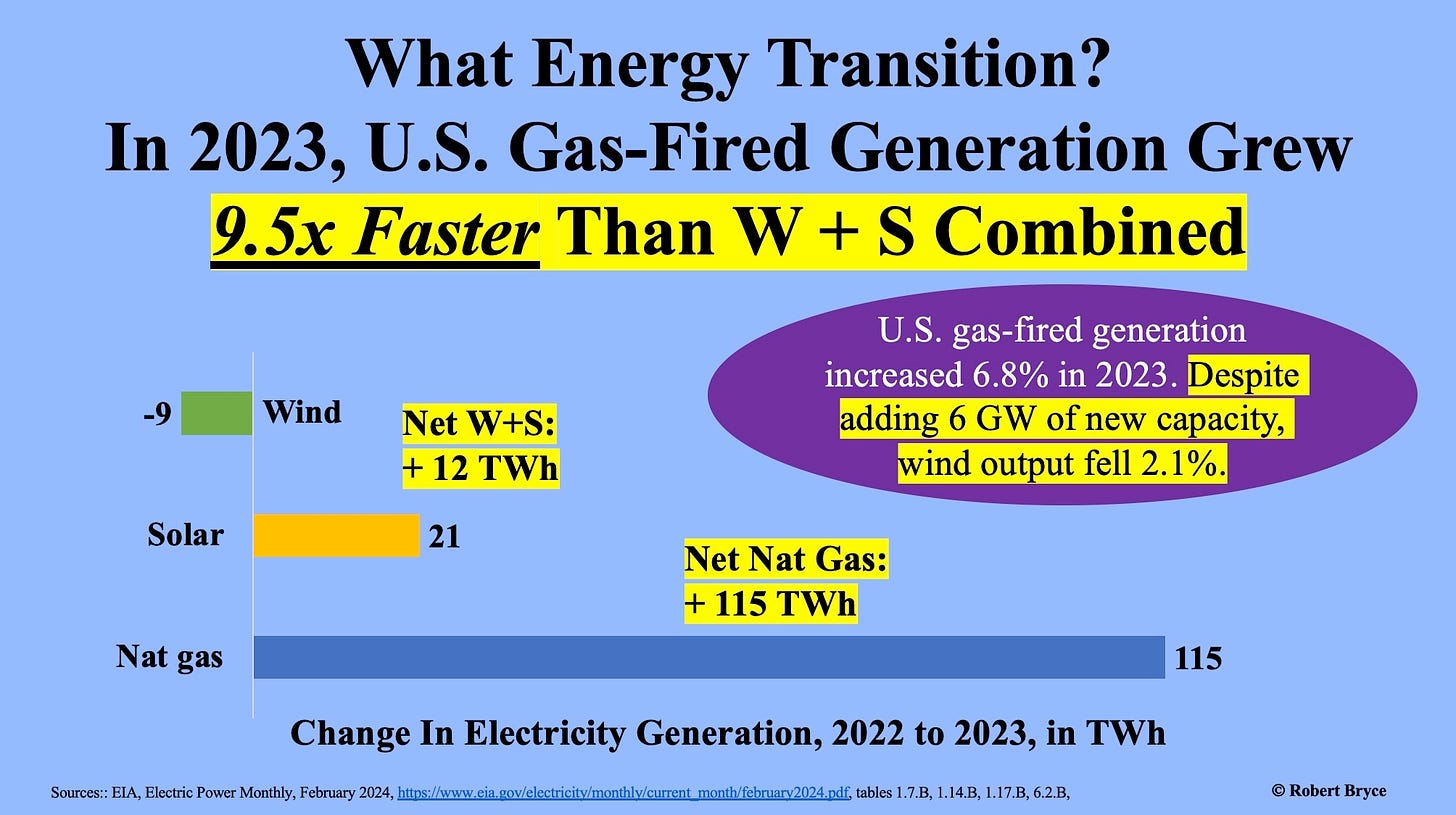
The surging use of the term “energy transition” can easily be seen by searching the New York Times archives. Between 2019 and 2023, the use of that phrase jumped 10-fold.
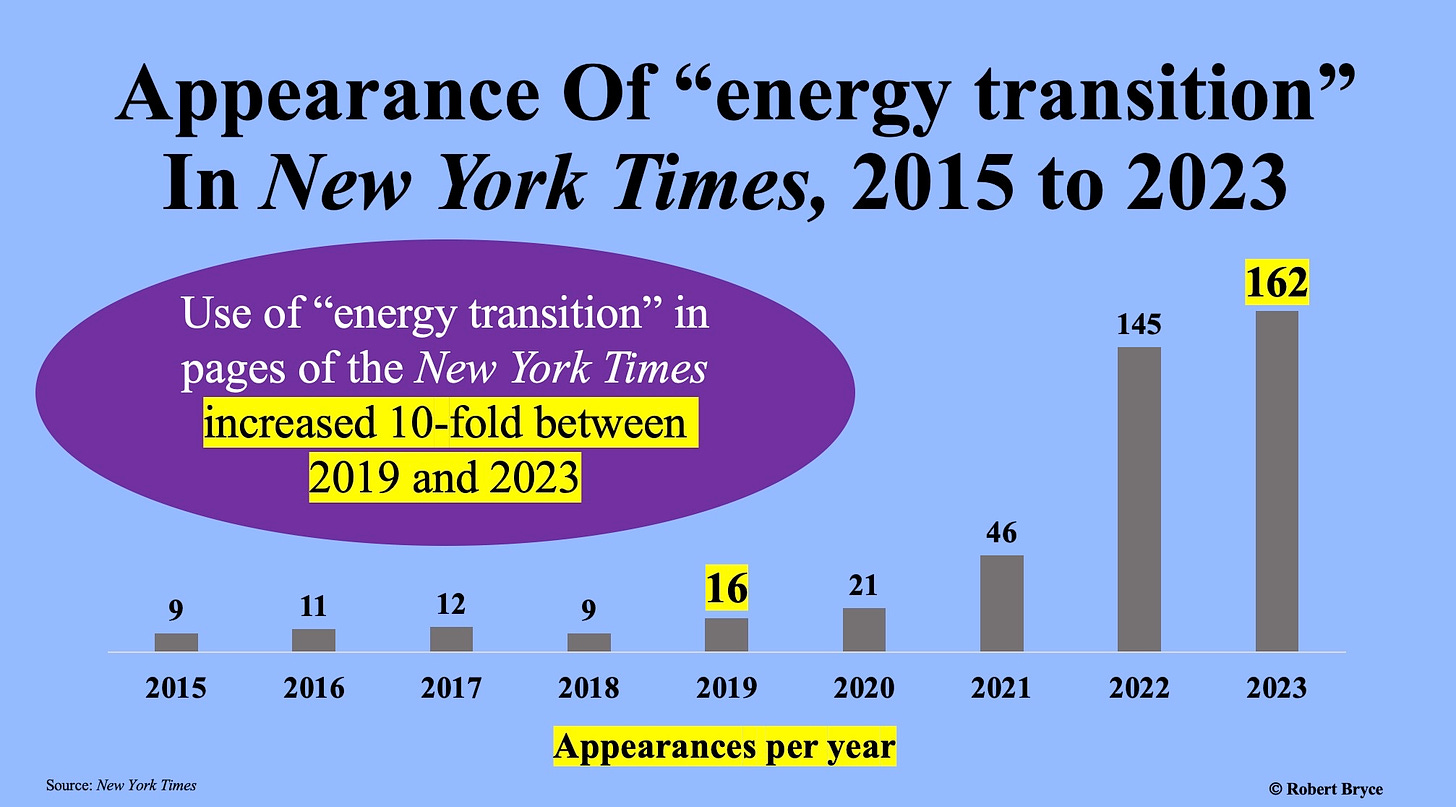
The same 10-fold increase can be seen in NewsBank’s newspaper database, which has the full text of over 10,000 newspapers

Perhaps the most straightforward way to observe the surge in the marketing of the “energy transition” is to look at the number of times it has been used during the presidential terms of Barack Obama and Joe Biden. Both, of course, are Democrats, and both, of course, have focused on climate. According the National Archives, Obama “believes that no challenge poses a greater threat to our children, our planet, and future generations than climate change — and that no other country on Earth is better equipped to lead the world towards a solution.” However, as seen in the graphic below, the Obama era had far fewer mentions of the energy transition than what has occurred under Biden. Indeed, that phrase has appeared more than 75,000 times during Biden’s presidency. Thus, the media has used the phrase “energy transition” 36 times more during Biden’s three-and-a-half years in the White House than during eight years of Obama’s presidency.
We can think this as the “Woozle Effect,” named after a Winnie The Pooh story by A.A. Milne. The Woozle Effect is also known as “evidence by citation,” which occurs when a source “is widely cited for a claim it does not adequately support, giving said claim undeserved credibility.”
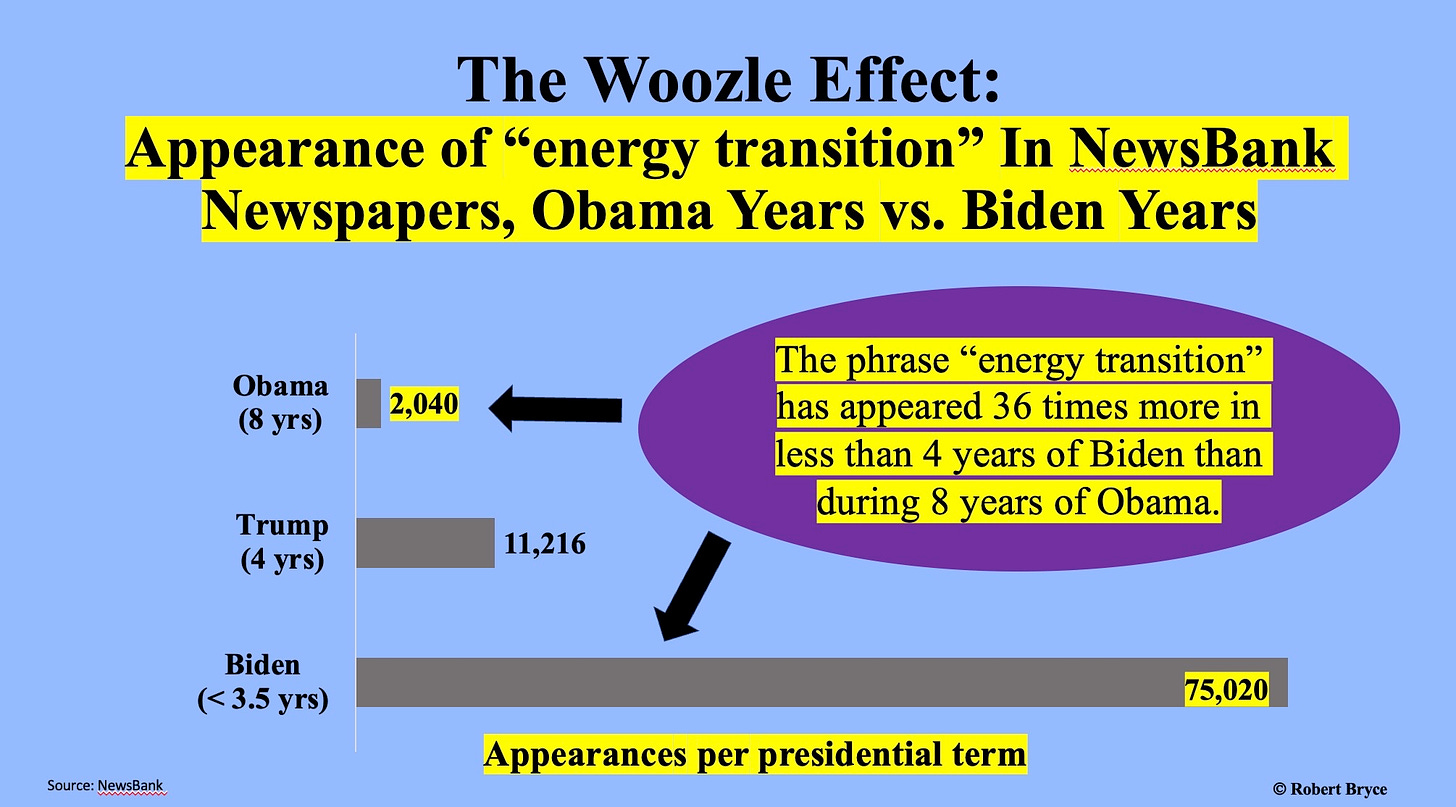
The punchline here is obvious: We are not in the midst of a major energy transition. Instead, what we are seeing is the media echo chamber at work. Media outlets are giving undeserved credibility to the idea of the energy transition despite a metric ton of evidence that shows no such transition is happening, particularly in developing countries like Bangladesh, China, India, Indonesia, and Vietnam. Indeed, the surge in the use of the phrase by the Biden administration — and its many allies in big media outlets — shows that we’re being bombarded by a public relations campaign that’s designed to convince the public and policymakers that an energy transition is happening and that we should be spending staggering sums of money on it.
A decade ago, energy analyst and polymath Vaclav Smil wrote, “hope for a quick and sweeping transition to renewable energy is fueled mostly by wishful thinking and a misunderstanding of recent history.” He explained that “for any new energy source to capture a large share of the market require[s] two to three generations: 50 to 75 years.” He concluded, “Energy transitions on a national or global scale are inherently protracted affairs.” That statement was true in 2014. And will be true for decades to come. Just don’t expect to read about it in major media outlets.